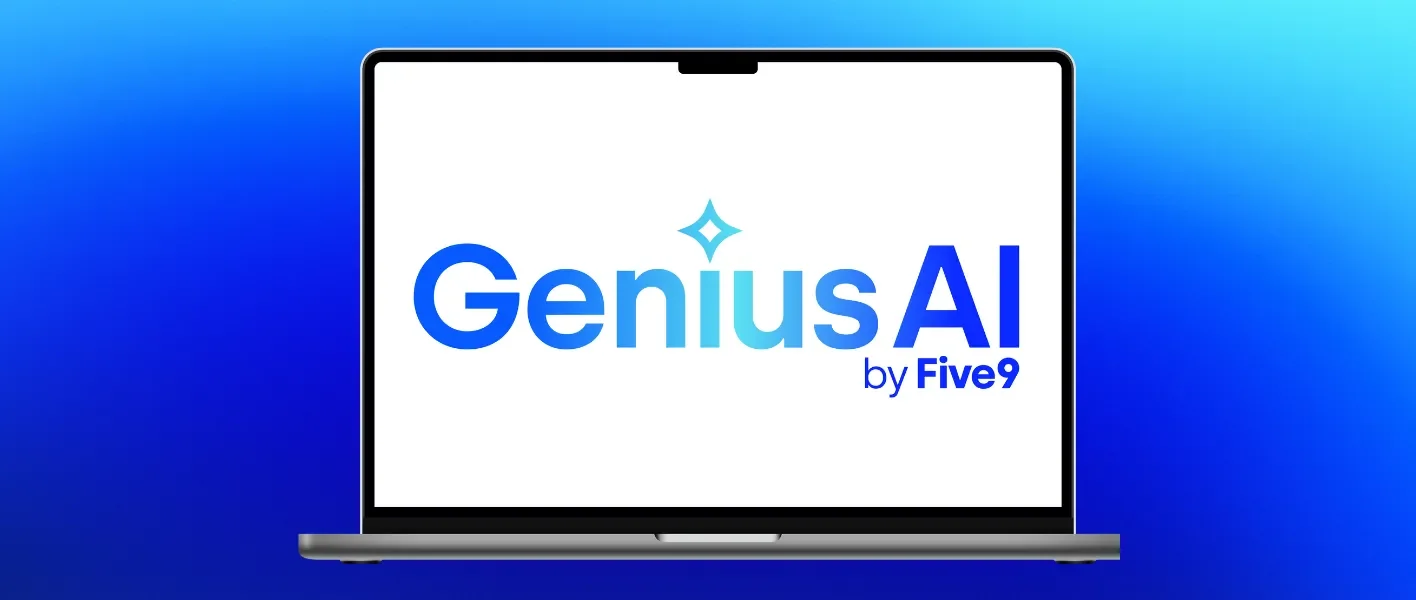
Five9 Genius AI Strategy Tenets: Future-Proofing Your Contact Center
With every CX software vendor talking about AI, it is becoming increasingly hard to understand the differences between them. Here at Five9, we believe our differentiation lies with our unique end-to-end process – called the Genius AI Process – which you can read more about here. It also resides with our four core tenets of the Five9 AI strategy: Embedded, Practical, Engine-Agnostic, and Responsible AI.
1. Embedded AI
The idea behind Embedded AI is that we are natively integrating AI capabilities into our core platform. It isn’t just some product that sits on the side, and it doesn't require complex integration to work with the rest of our platform. This dramatically reduces implementation time and thus time to value. Deep integration into the platform also means integration with data that enables personalization and customization. For instance, to enable transcription of calls to help execute the Listen phase of our Genius AI process, customers use our Admin Console and with just a few clicks, select the campaigns and skills to listen to. That’s it. The transcripts and all of their meta-data are collected. No recordings to enable, no files to transfer or upload, no transcription engines to plug in. It’s all embedded within the platform. As another example, Agent Assist guidance cards – also configured from our Admin Console – can be customized with interaction variables collected during interaction handling. These manifest in drop-down menus that allow them to be added to any card. These variables allow customization and personalization of guidance cards for agents. This also speaks to the power of Embedded AI – if Agent Assist were some product that just sits on the side, it wouldn’t have deep access to these variables present in the platform. There are countless examples of this.
2. Practical AI
Practical AI means that Five9 focuses on real customer outcomes that improve CX, reduce costs, generate revenue, or have some other business goal. It is really easy to produce flashy demos of capabilities that look great on stage or in a video, but these often aren’t reliable enough to bring to production. We’ve had cases where customers asked us to build self-service voice assistants for use cases that we thought were too complex for automation. Excited by the hype of AI, they saw an opportunity to reduce costs for a use case that could be done in a demo but we knew would be highly error prone in practice, increasing costs and reducing CX at the same time. So, we advised them against it. Practical AI isn’t just saying no of course – it’s about partnering with our customers and using our technology stack and our experts to identify meaningful use cases that deliver results.
3. Engine-Agnostic AI
Engine-Agnostic AI means that Five9 isn’t in the business of building our own AI models from scratch. We leverage third-party provided models for tasks like speech recognition, intent detection and entity extraction, speech synthesis, and large language models. We then tailor these models to fit the individual use cases for each customer. This approach has allowed us to adapt to the rapidly changing landscape of AI providers. Our customers gain access to the latest and greatest technology, and their investments are protected. When a new LLM provider shows up with even better results at a better price (something which happens on an almost weekly basis these days), we can make use of this technology, and our customers don’t need to re-do their implementations. With GenAI Studio, customers can select that new engine, validate it works with our built-in testing capability, and with one click (literally one click) push that new LLM prompt into production. Our customers can ride waves of technological innovation without worrying about getting locked into something obsolete.
4. Responsible AI
Finally – we focus on responsible AI. There is a lot to say on this topic. For us, it has three parts. First, we treat our customer’s data with care. Second, we respect the role of humans and ensure AI decisions are measured in terms of human benefit. Finally, we provide technology and experts that allow customers to properly manage the inherent risks of hallucinations. This is something which is often missed in the hype cycle around AI – that this AI technology is amazing but it absolutely makes mistakes. These mistakes can be devastating to a brand if the technology is not applied in the right way, with the right processes to manage it. In many ways, the same is true for employing humans for a task. They too make mistakes. This is managed through careful human resource processes – onboarding, training, oversight, review, and feedback. These kinds of capabilities are essential in the era of generative AI, and they are foundational to what Five9 GenAI Studio provides.
At Five9, we believe AI – and specifically generative AI – will be transformative for our industry. To realize the benefits of this technology, we’ve focused on these four pillars – embedded, practical, engine-agnostic, and responsible – which are all rooted in the same goal: helping our customers be successful with AI.
To learn more about Five9 Genius AI, read our latest E-book.



